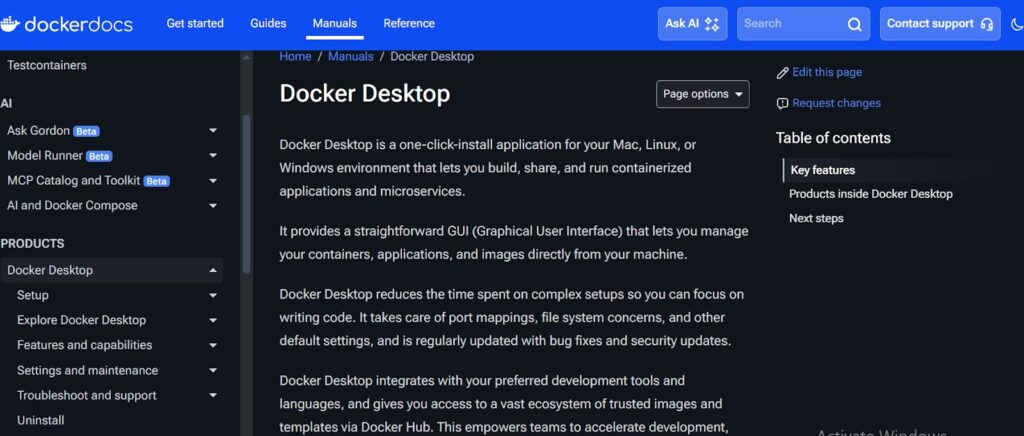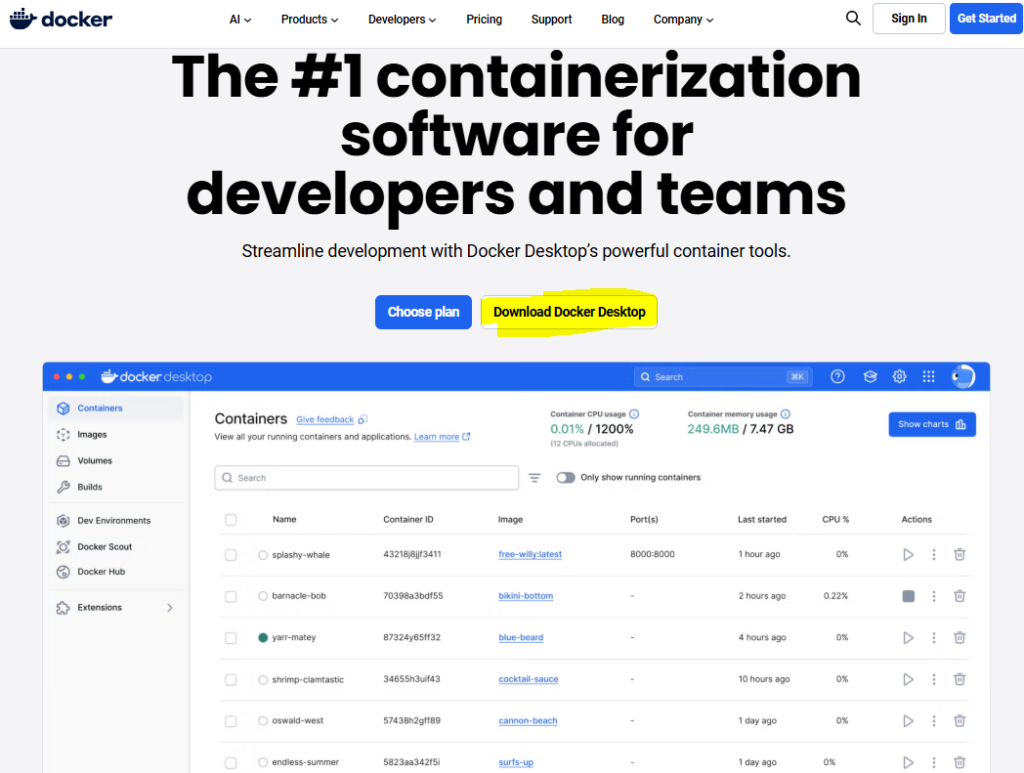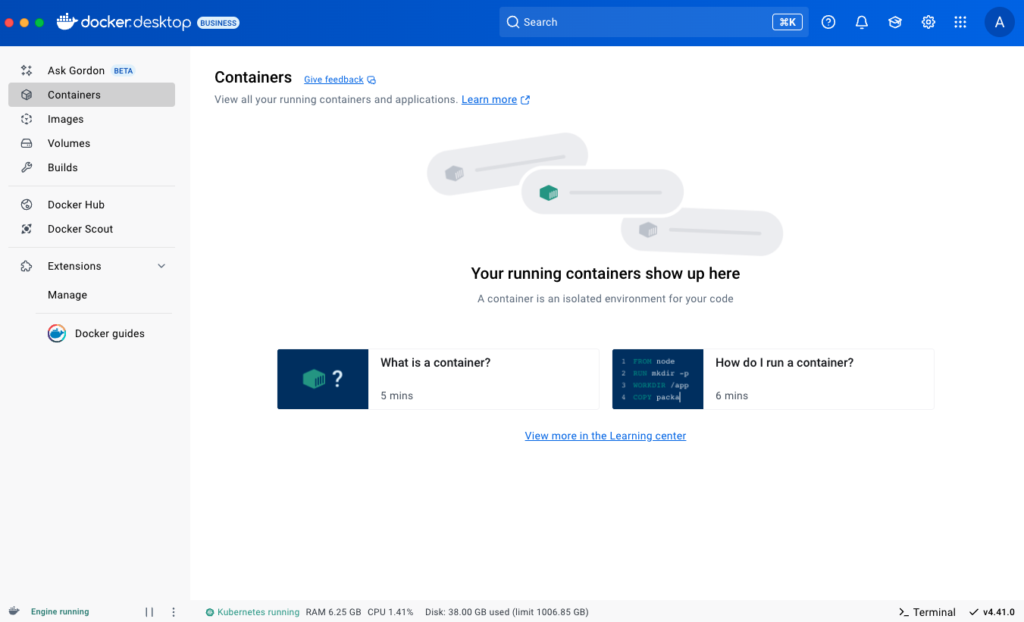In today’s fast-paced development world, containerization has become essential for building, shipping, and running applications efficiently. Docker is a leading platform that enables developers to package applications along with all their dependencies into a standardized container. For Windows users, Docker Desktop provides a straightforward way to take advantage of these features on a local machine. Whether you are a beginner or an experienced developer, using Docker Desktop on Windows can improve your workflow, ensure consistency across environments, and increase productivity.
This blog post, brought to you by WeCloudData – the leading data & AI academy for students and companies, will guide you through everything you need to know about Docker Desktop for Windows, from installation to basic usage and troubleshooting. At WeCloudData, we help professionals and students stay ahead in the world of data science, machine learning, and AI by making complex tools like Docker easy to understand. In this guide, we’ll cover key topics such as how to download and install Docker Desktop on windows, and address common issues like Docker Desktop not opening on Windows. By the end, you’ll be equipped to use Docker effectively as a Windows user. All information is based on the official Docker documentation to ensure accuracy and reliability.
Follow this link to get the basic understanding of what Docker is and how it works.
What is Docker Desktop for Windows?
Docker Desktop for Windows is a one-click-install application that lets you build, share, and run containerized applications on your Windows machine. It includes a graphical user interface (GUI) for managing containers, images, and volumes, along with integration for command-line tools. Unlike traditional virtual machines, Docker containers are lightweight and share the host’s kernel, making them faster and more efficient.
Docker Desktop supports both Linux and Windows containers for Windows users. It uses the Windows Subsystem for Linux (WSL 2) backend by default for Linux containers, providing native performance. According to the official documentation, Docker Desktop reduces setup time by automatically handling port mappings, file system concerns, and security updates. It is available for free for personal use, with paid subscriptions necessary for larger enterprises.

System Requirements for Docker Desktop on Windows
Before starting the install Docker Desktop on windows, make sure your system meets the requirements for Docker Desktop on Windows. You need a 64-bit operating system with virtualization support.
- For Windows 11: Home, Pro, Enterprise, or Education edition, version 22H2 or higher.
- For Windows 10: Home, Pro, Enterprise, or Education edition, version 22H2 or higher.
- You should have at least 4GB of RAM, though more is recommended for running multiple containers.
Key requirements include:
- Hardware virtualization enabled in BIOS/UEFI (Intel VT-x or AMD-V).
- Windows features: Hyper-V, Virtual Machine Platform, and Windows Subsystem for Linux (WSL 2).
- WSL version 2.1.5 or later.
To check if virtualization is enabled, open Task Manager, go to the Performance tab, and look under CPU. If it’s disabled, restart your PC, enter BIOS (usually by pressing F2 or Del), and turn it on. For WSL, open PowerShell as an administrator and run wsl –install if it’s not already set up.
Note: Windows containers are not supported on Home editions without extra adjustments, but Linux containers work fine with WSL 2.
Installing Docker Desktop on Windows 10/11
To get started, you need to download Docker Desktop for Windows from the official source. Go to the Docker website at https://www.docker.com/products/docker-desktop/. Select the Windows option, and the download should begin automatically.
Installing Docker Desktop on Windows is straightforward, but here is the breakdown for Windows 10 and Windows 11 users.

How to Install Docker Desktop on Windows for Windows 10
For Windows 10, first ensure WSL 2 is installed. Run the installer as an administrator. The wizard will prompt you to enable WSL 2 if it’s not detected. Accept the license and choose whether to use WSL 2 or Hyper-V backend; WSL 2 is the default and recommended option.
During installation, you may have to restart your computer. After completing the installation, launch Docker Desktop. If prompted, add your user to the docker-users group: Open Computer Management, go to Local Users and Groups, then Groups, and select docker-users. Right-click and add your username. Sign out and back in.
How to Install Docker Desktop on Windows 11
The process is similar to install Docker Desktop on Windows 11. Download and run the installer. Windows 11 supports WSL 2 natively, which makes setup easier. Follow the on-screen instructions to authorize and install. After installation, start Docker Desktop and accept the terms.
If you run into issues while installing Docker Desktop on Windows, check for pending Windows updates or conflicting software like older versions of VirtualBox. For command-line installation, use: Start-Process ‘Docker Desktop Installer.exe’ -Wait install
Setting Up Docker Desktop on Windows
Once installed, setting up Docker Desktop on Windows involves a few quick steps. Launch the app from the Start menu. On first run, it may download additional components like the Linux kernel for WSL 2.
In the settings you can configure resources such as CPU cores, memory, and disk space. Enable Kubernetes if you need it, or switch to Windows containers through the dashboard. Sign in with your Docker ID to access Docker Hub.
To verify the setup, open Command Prompt or PowerShell and run docker –version. You should see the installed version. For GUI users, the dashboard displays containers, images, and volumes.

How to Use Docker as a Windows User: Basic Usage
Now that you’re set up, let’s explore basic usage of Docker Desktop for Windows.
Start by pulling an image: docker pull hello-world. Run it with docker run hello-world to see a confirmation message.
For a more interactive example, run a web server: docker run -d -p 8080:80 docker/welcome-to-docker. Access it at http://localhost:8080 in your browser.
Use the GUI to Manage Containers
In the Containers tab, view running instances, inspect logs, or open a shell. Build your image by creating a Dockerfile in a project folder.
FROM nginx
COPY . /usr/share/nginx/html
Run docker build -t myapp . and docker run -p 80:80 myapp.
As a Windows user, note that file paths in commands use forward slashes, and volumes mount from C:\ paths. Integrate with VS Code via the Docker extension for seamless development.
Troubleshooting: Docker Desktop Not Opening on Windows
One common issue is Docker Desktop not opening on Windows. This can happen because virtualization is not enabled, WSL is outdated, or there are permission problems. First, ensure virtualization is turned on and restart your computer. Update WSL by running wsl –update. Check the Task Manager for any stuck Docker processes and end them.
If it still fails, try running Docker as an administrator or reset it to factory settings using the troubleshoot menu. If needed, add yourself to the docker-users group. An antivirus program or firewall might block Docker; add it to the exceptions. For ongoing issues, check the logs via the troubleshoot option and report the diagnostic ID.
Other solutions include reinstalling Docker or checking for Windows updates. Refer to the official troubleshooting documents for more information.

Advanced Tips for Docker Desktop on Windows
Once you feel comfortable, explore advanced features. Use Docker Compose for multi-container applications. Create a docker-compose.yml file and run docker-compose up. Enable Enhanced Container Isolation (ECI) for better security if you have a business subscription. You can also integrate with GitHub Actions for continuous integration and delivery.
Level Up with Docker: Join Our Live AI Development Event
Now that you’ve explored Docker installation, why not take your skills further with AI development? Join WeCloudData for a live event on September 4, 2025, at 7:00 PM Eastern
Topic: Getting started with local AI development
Speaker: Mike Coleman, Staff Solutions Architect at Docker
Why You Should Join
Dive into using Docker tools to streamline AI development, run machine learning models on your local machine, and seamlessly scale them to the cloud.
Mike brings a wealth of experience from his time at Google Cloud, AWS, VMware, and Microsoft, where he empowered developers to overcome complex challenges. Now at Docker, he’s dedicated to guiding teams in building robust, containerized AI workflows.
Fun Fact: In his spare time, Mike creates spectacular holiday light displays with over 32,000 lights synced to more than two dozen songs!
If you’re ready to transform your AI projects from local experiments to scalable, real-world solutions, this event is a must-attend. Secure your spot to gain insights from a Docker expert!
Learn with WeCloudData
Enroll in our Introduction to Docker course and start mastering Docker today! Or if you are an organization looking to upskill its employees, we recommend that you explore our corporate AI upskilling program.
What WeCloudData Offers
- Career-Focused Bootcamps: Learn Python, Data Science, Data Engineering, Machine Learning, and AI via our learning tracks.
- WeCloudData’s Corporate Training programs are designed to meet the needs of forward-thinking companies. With hands-on, expert-led instruction, our courses are designed to bridge the skills gap and help your organization thrive in today’s data-driven economy.
- Live public training sessions led by industry experts
- Career workshops to prepare you for the job market
- Dedicated career services
- Portfolio support to help showcase your skills to potential employers.
- Enterprise Clients: Our expert team offers 1-on-1 consultations.
Join WeCloudData to kickstart your learning journey and unlock new career opportunities in Artificial Intelligence.

